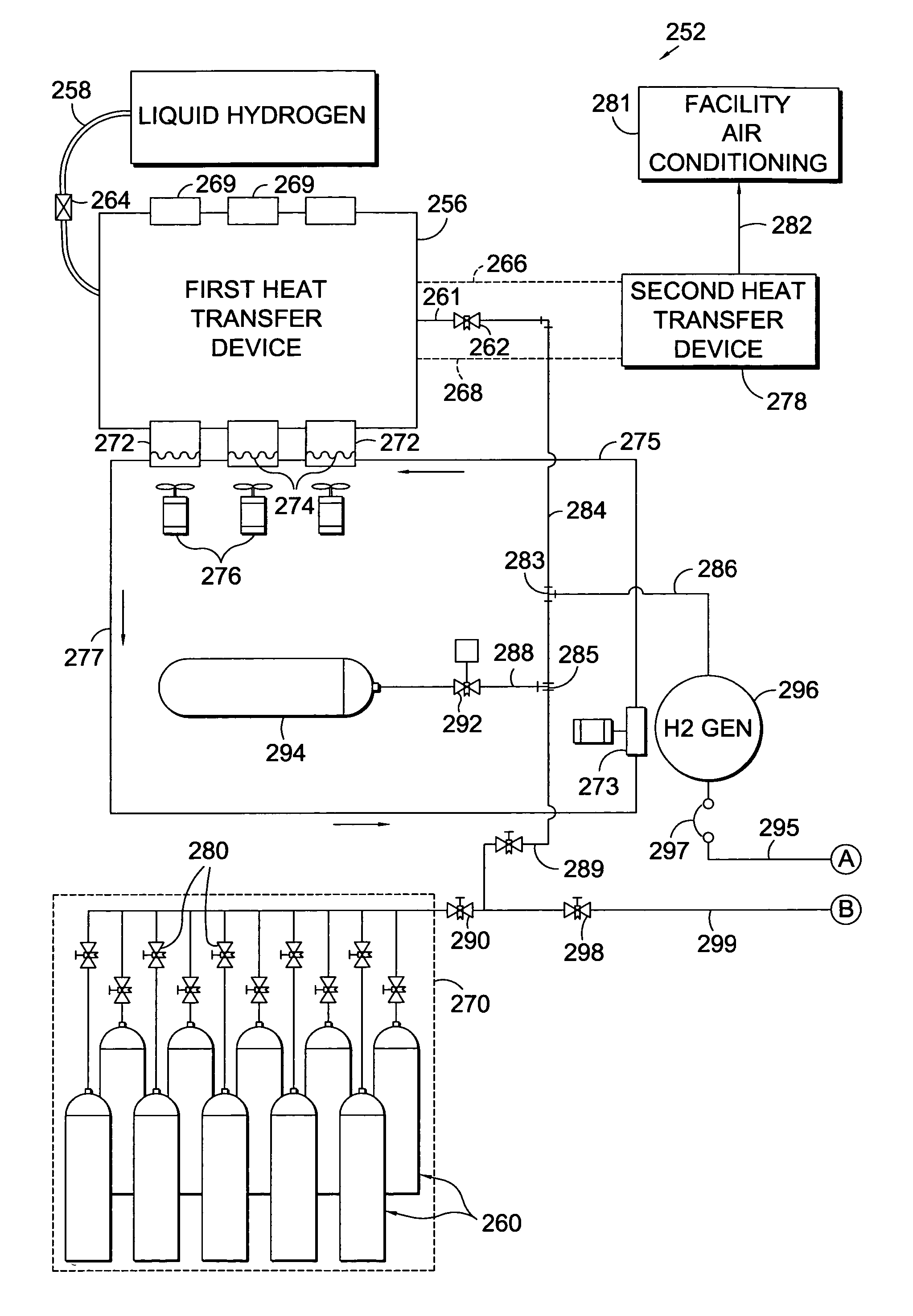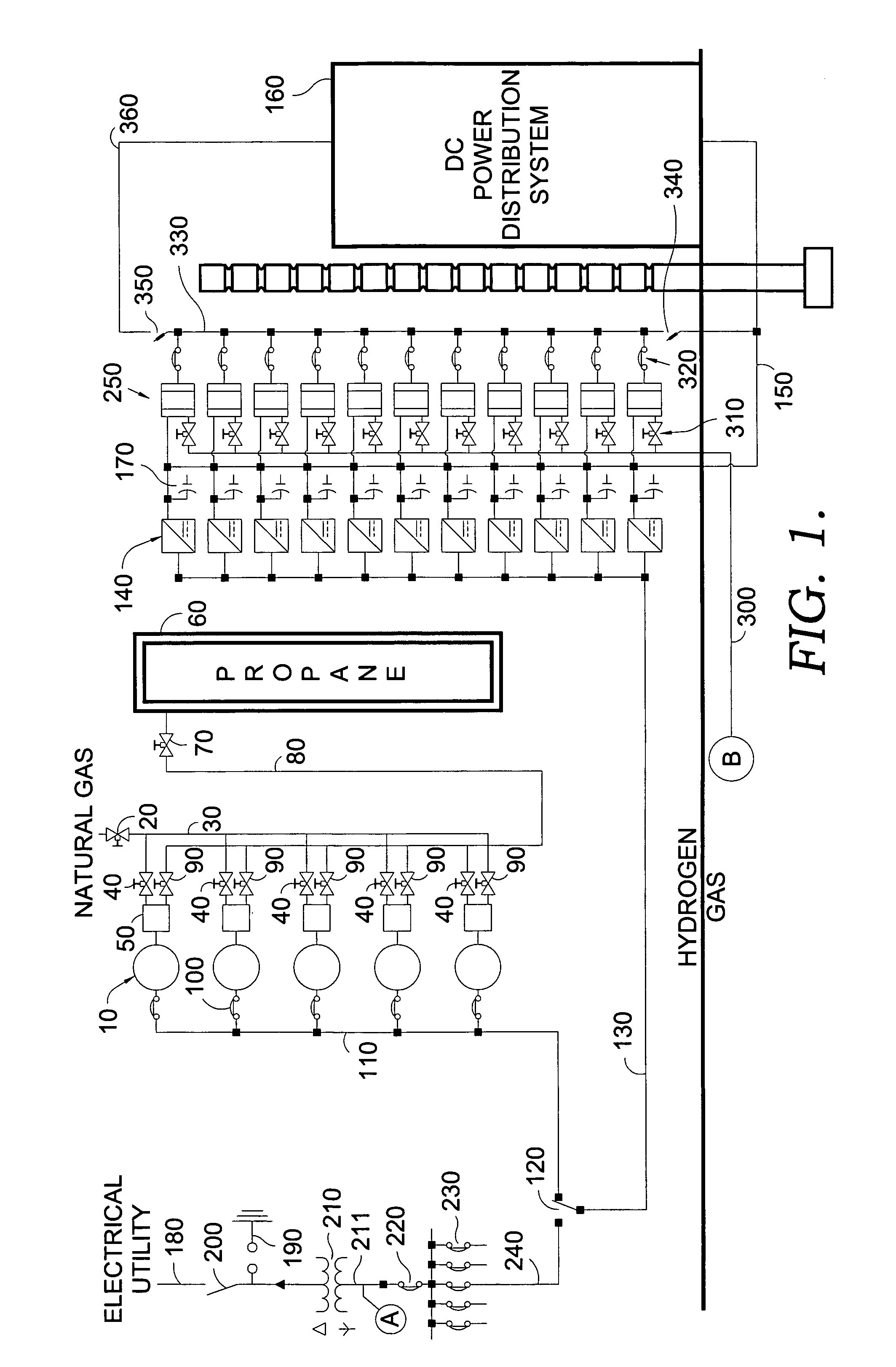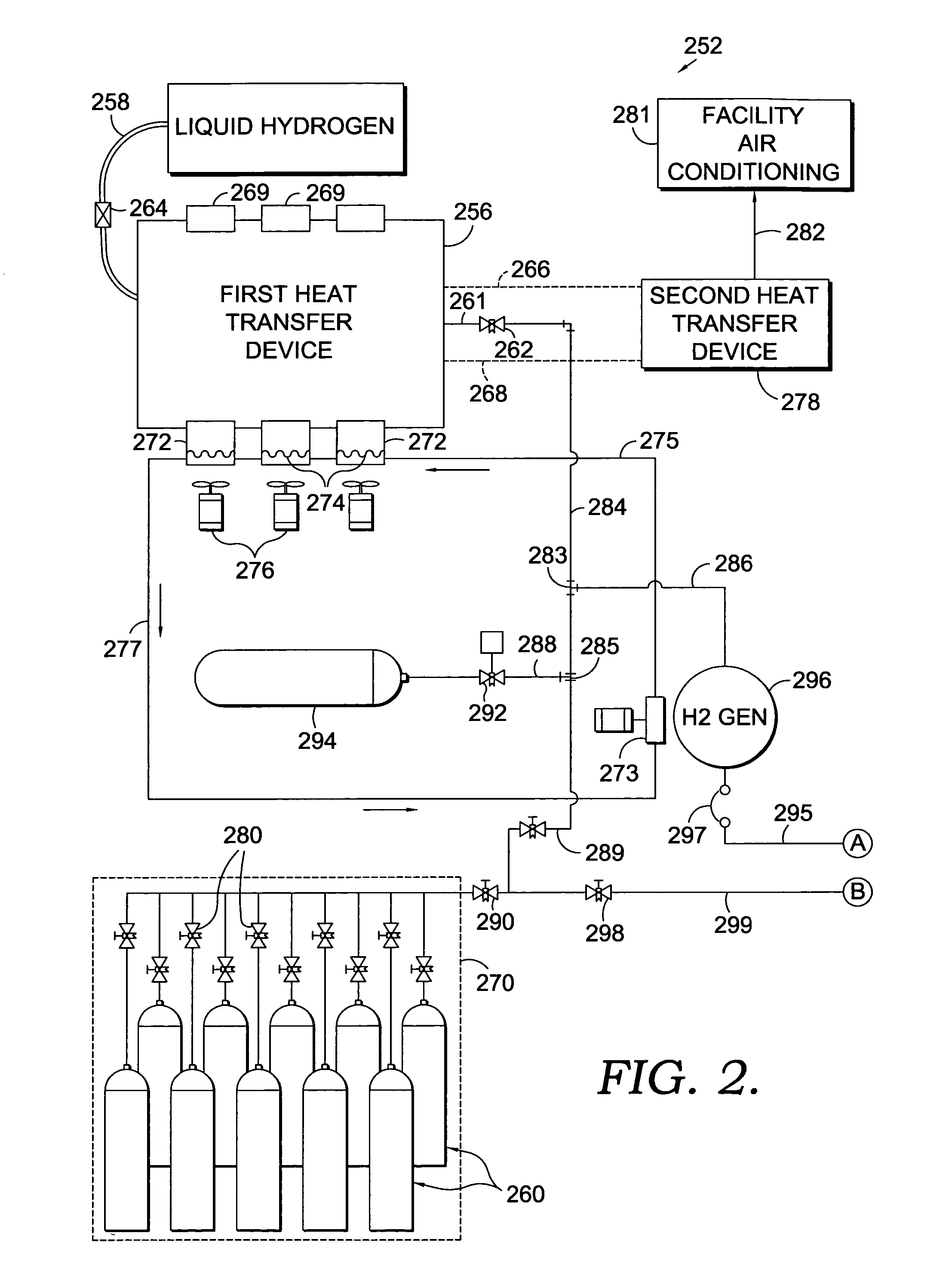Power system for a telecommunications facility
a technology for telecommunications facilities and power systems, applied in the direction of machines/engines, mechanical equipment, electrochemical generators, etc., can solve the problems of power systems for telecommunications facilities, components will eventually overheat and fail, and the operation of digital components generates a significant amount of hea
- Summary
- Abstract
- Description
- Claims
- Application Information
AI Technical Summary
Benefits of technology
Problems solved by technology
Method used
Image
Examples
Embodiment Construction
[0017]The present invention, in one embodiment, works along with a power system for a telecommunications facility. The novel power generation facility with which the present invention may be used employs liquid hydrogen as an energy source. In the embodied system, the hydrogen is used in two ways. It may be combusted, or it may be introduced into a battery of proton-exchange devices. For combustion, the system provides an internal combustion engine. This internal combustion engine is used to generate alternating current (AC) to satisfy the standard needs which are typical for all facilities, e.g., the heating, air conditioning, lighting, inter alia. The direct current (DC) generated by the introduction of hydrogen into the battery of proton exchange devices is used to meet the special DC power needs of the telecommunications facility, e.g., phone line support.
[0018]Before being used to generate energy for either method, the liquid hydrogen must first be converted to vapor. The vapor...
PUM
| Property | Measurement | Unit |
|---|---|---|
| electrical power | aaaaa | aaaaa |
| power | aaaaa | aaaaa |
| current | aaaaa | aaaaa |
Abstract
Description
Claims
Application Information
 Login to View More
Login to View More - R&D
- Intellectual Property
- Life Sciences
- Materials
- Tech Scout
- Unparalleled Data Quality
- Higher Quality Content
- 60% Fewer Hallucinations
Browse by: Latest US Patents, China's latest patents, Technical Efficacy Thesaurus, Application Domain, Technology Topic, Popular Technical Reports.
© 2025 PatSnap. All rights reserved.Legal|Privacy policy|Modern Slavery Act Transparency Statement|Sitemap|About US| Contact US: help@patsnap.com



